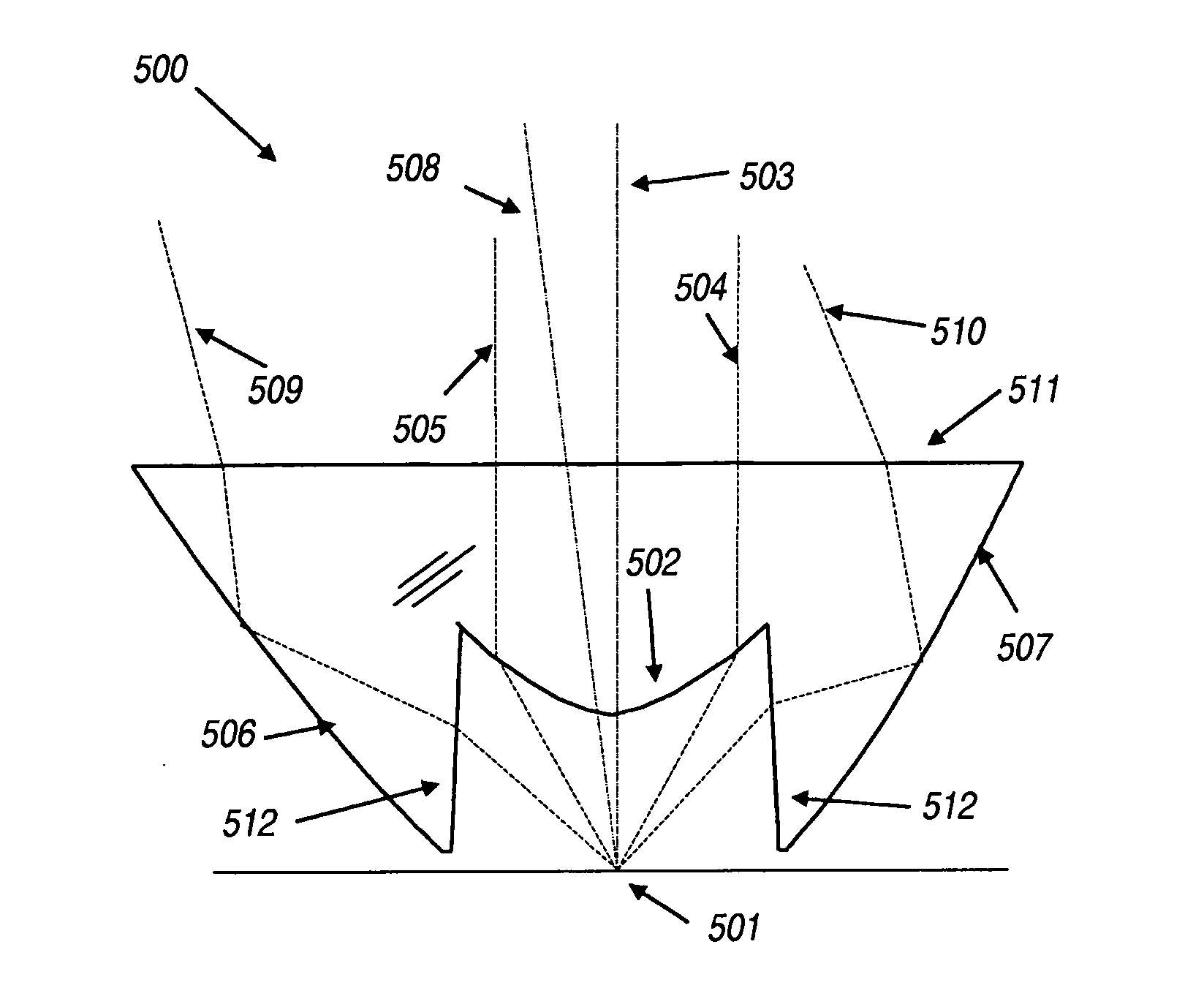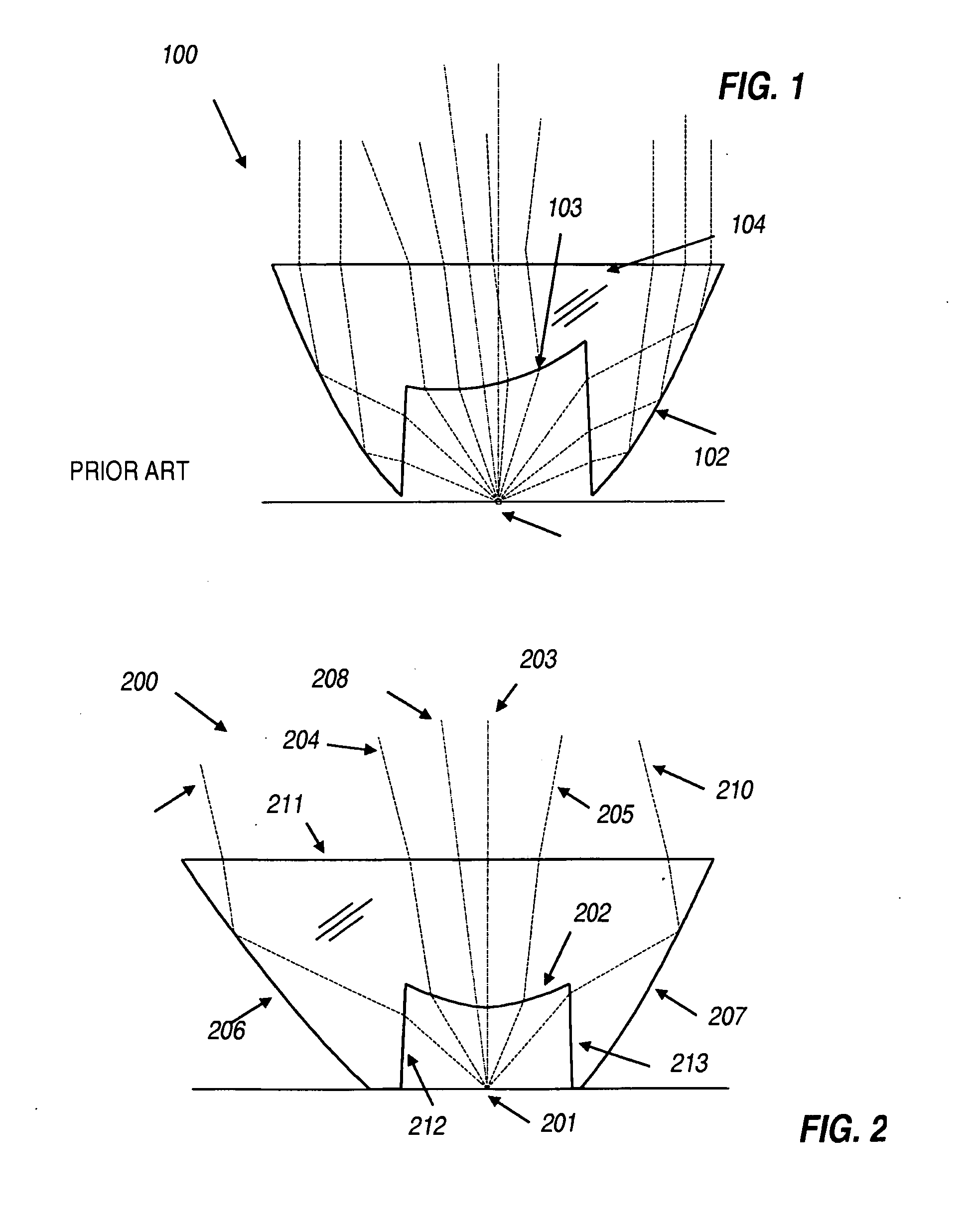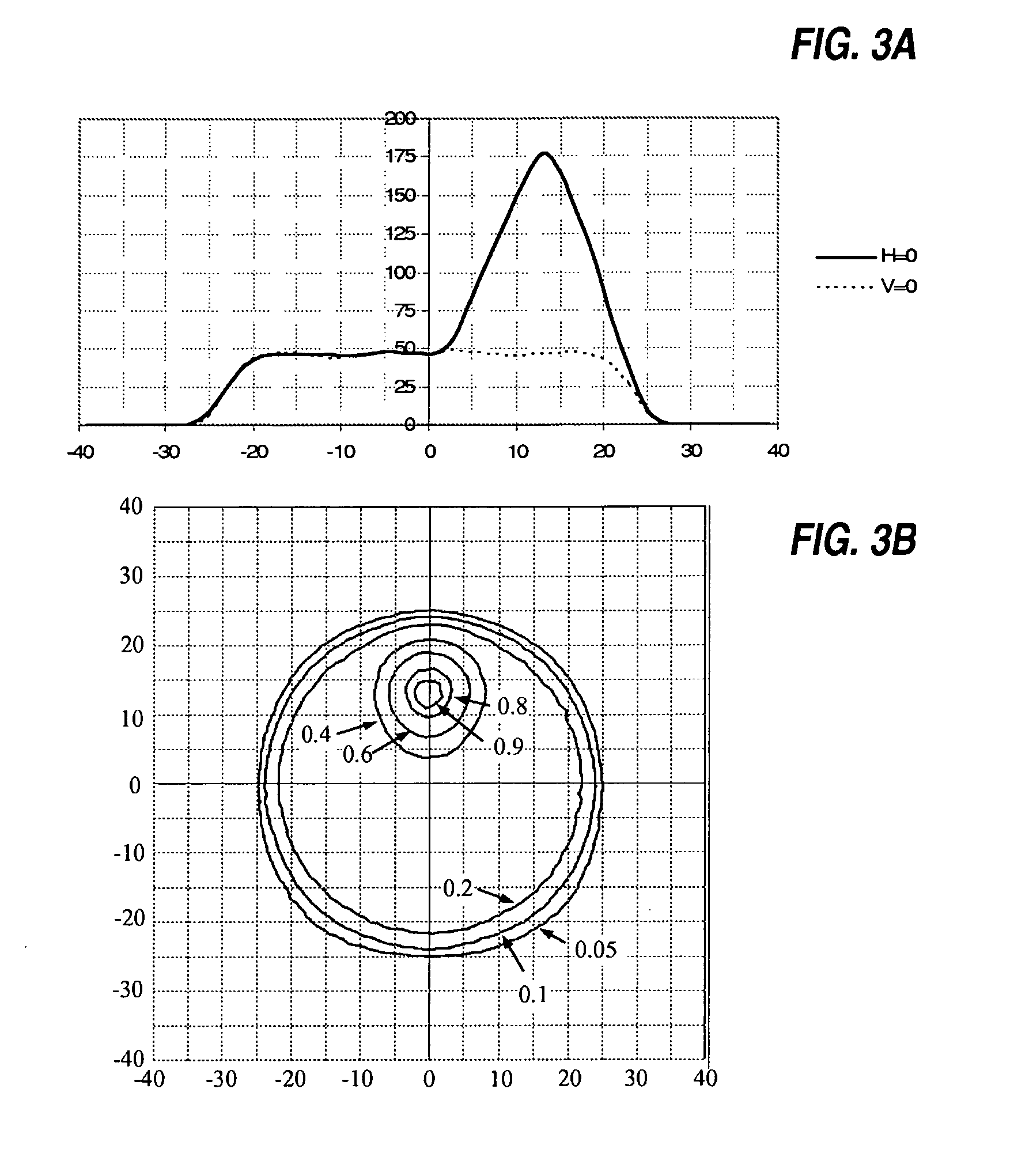Off-axis collimation optics
a collimation optics and off-axis technology, applied in the field of off-axis collimation optics, can solve the problems of inability to use configuration, inability to provide such beams from the center lens, and inability to be optimal, and achieve the effect of extending the tilt angle of the off-axis beam
- Summary
- Abstract
- Description
- Claims
- Application Information
AI Technical Summary
Benefits of technology
Problems solved by technology
Method used
Image
Examples
Embodiment Construction
[0025]A better understanding of the features and advantages of the present invention will be obtained by reference to the following detailed description of the invention and accompanying drawings, which set forth illustrative embodiments in which the principles of the invention are utilized.
[0026]In the following drawings all architectures are described in more detail:
[0027]Referring to FIG. 2, a lens 200 represents a photon funnel that collimates the light from a source 201 into an off-axis hot spot and also creates a low-intensity background illumination. The photon funnel 200 comprises a dielectric lens with a central cavity. Lines 212 in FIG. 2 are cross sections of a conical surface of rotation with respect to the source axis 203, forming the side wall of the cavity. Surface 202 forms a central lens, closing off the front end of the cavity, and is a rotationally symmetric surface around axis 203. Lens surface 202 is shaped so that rays such as 204 and 205 that are refracted at ...
PUM
 Login to View More
Login to View More Abstract
Description
Claims
Application Information
 Login to View More
Login to View More - R&D
- Intellectual Property
- Life Sciences
- Materials
- Tech Scout
- Unparalleled Data Quality
- Higher Quality Content
- 60% Fewer Hallucinations
Browse by: Latest US Patents, China's latest patents, Technical Efficacy Thesaurus, Application Domain, Technology Topic, Popular Technical Reports.
© 2025 PatSnap. All rights reserved.Legal|Privacy policy|Modern Slavery Act Transparency Statement|Sitemap|About US| Contact US: help@patsnap.com



